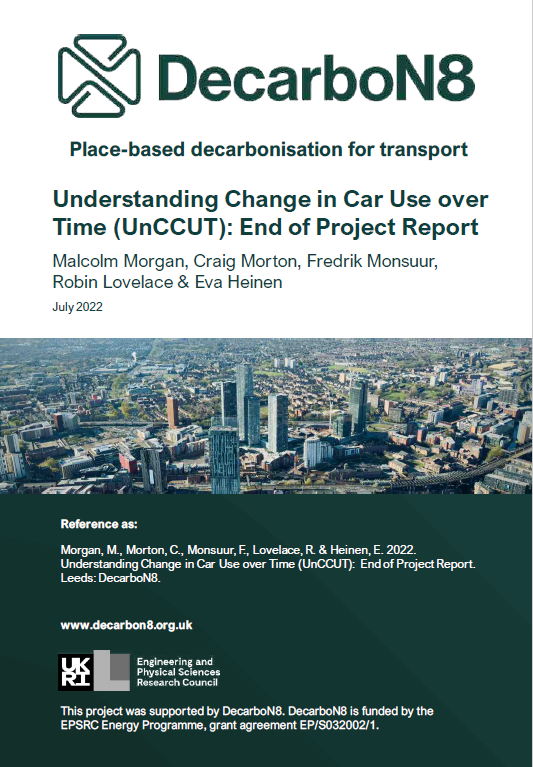UNCCUT: Understanding Change in Car Use over Time
Authors: Malcolm Morgan, Craig Morton, Fredrik Monsuur,
Robin Lovelace & Eva Heinen (2022)
PDF (24 pages, 2 MB)
This study works with vehicle licensing statistics at a neighbourhood scale alongside other publicly available land-use and transport data sources to understand what is associated with increases and decreases in car ownership at a small spatial scale and what this can teach us about how to reduce car ownership nationwide.
Key Findings
Reducing car use and ownership is necessary for decarbonising the UK economy. There are no plausible pathways to get to net-zero by 2050 unless the number of cars reduces. Nevertheless, in the last twenty years, car ownership has grown steadily. In this report, we explore a new and spatially detailed time series dataset about car ownership in England and Wales between 2002 and 2018. We seek places where car ownership is in decline and ask if there are any lessons that these places can teach us about how to reduce car ownership nationwide.
Largely it was found that the most successful way to reduce car ownership was to build dense low-car housing such as flats within existing urban areas. This was often successful in increasing the resident population without increasing the number of cars and, in some cases, reducing the number of cars within the LSOA.
An exploration of changes in car ownership around new train and tram stations produced mixed results. Overall, it appears that new stations reduce car ownership in places where car ownership is below average but have little effect on areas where car ownership is already high.
The analysis also highlighted the importance of considering key demographic groups such as children, students, and the elderly, that are less likely to own cars, so shifts in their relative proportions can skew the apparent rate of car ownership.
The report identifies several opportunities for further research and makes recommendations about how car ownership and use changes could be better understood in the future by incorporating data on car use as opposed to ownership, and data around population, demographics, house building, and public transport.

